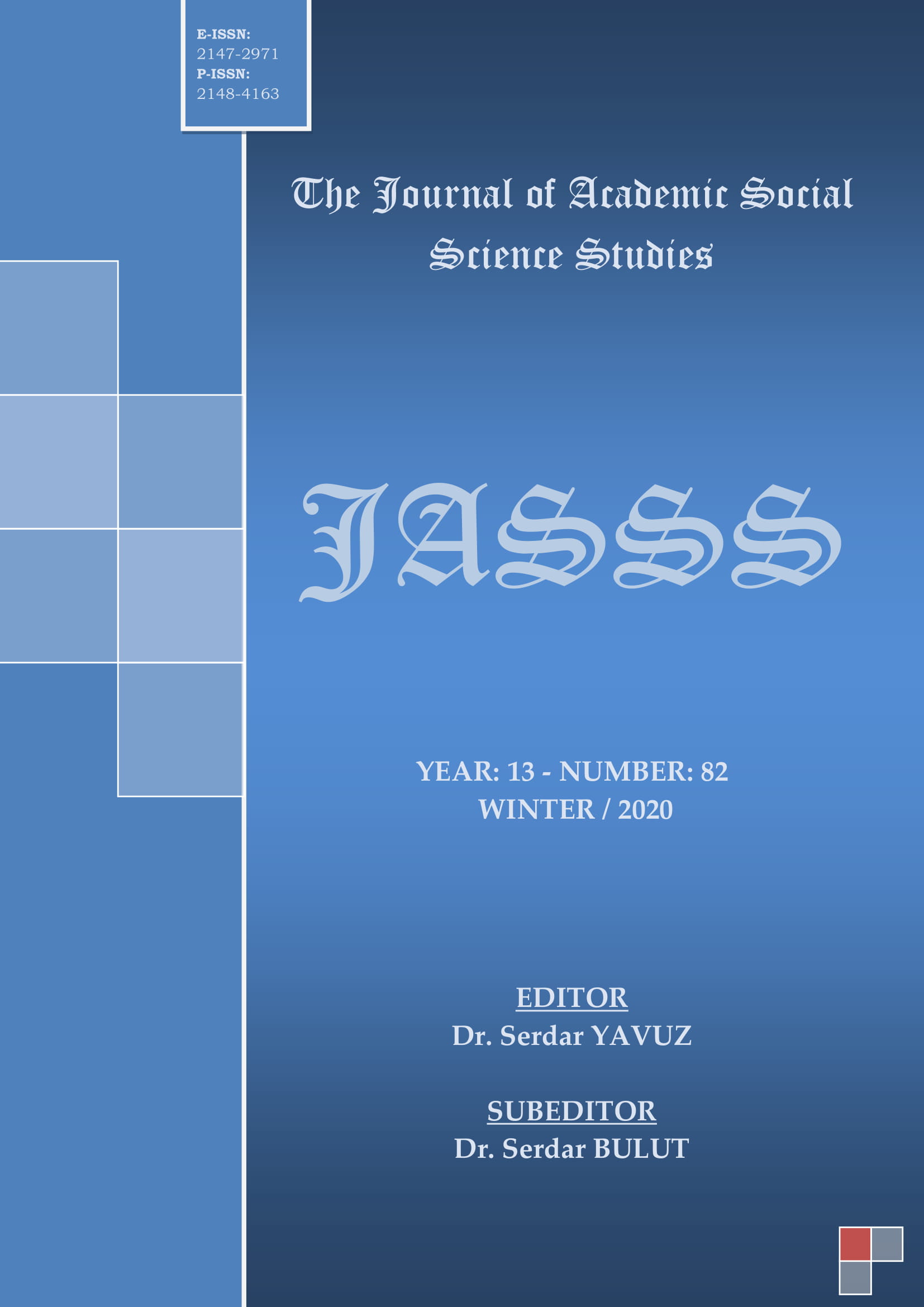GOCE SMILEVSKI’NİN FREUD’UN KIZ KARDEŞİ ADLI ROMANINDA TOPLUMSAL CİNSİYETÇİLİK VE FEMİNİZMİN YANSIMALARI
Author :
Abstract
Bu çalışma, genel anlamda Goce Smilevski’nin Freud’un Kız Kardeşi adlı romanı üzerinden 19. Yüzyılda Avrupa’da ataerkil toplum yapısı içinde kadına karşı tutumu bir kez daha gözler önüne sermeyi amaçlamaktadır. Özelde ise kadına karşı tutum ekseninde, toplumsal cinsiyetçilik karşısında feminizm, normallik kavramı karşısında ise delilik kavramı ele alınacaktır. Doğal olarak feminist teorinin benimseneceği çalışmada Virginia Woolf’un Kendine Ait Bir Oda, Susan Gubar ve Sandra Gilbert’in Tavan Arasındaki Deli Kadın (The Madwoman In The Attic) gibi artık klasikleşmiş ancak aradan geçen uzun yıllara rağmen eskimemiş ve hala güncelliğini koruyan fikirler barındıran eserlere ikincil kaynaklar olarak yer verilecektir. Sonuç olarak, 19. Yüzyılda da Viktorya Dönemi kadın tipinin bazı değişimlerle de olsa uzantılarının varlığını sürdürdüğü; toplumsal cinsiyetçiliğin gözle görülür şekilde toplumda yer ettiği, hatta zaman zaman açıkça ifade edildiği; buna karşın kadın cephesinde kadın hareketi veya feminizm bağlamında bazı gelişmelerin gözlendiği; fakat bu gelişmelerin küçük çapta ve yetersiz kaldığı; bu nedenle de toplumsal kurallara ve kendilerine ataerkil toplum tarafından biçilmiş rollere uymayan kadınların “normal dışı” veya “deli” olarak kabul edildiği toplumsal düzenin Viktorya döneminden bu yana (burada romandaki dönem kast edilmektedir) çok da değişmediği ve ataerkil toplumda kadına karşı tutumun 19. yüzyılda da o dönemdeki gibi sürdüğü ortaya koyulacaktır.
Keywords
Abstract
This study, generally aims to reveal the attitude towards women in the patriarchal society in the 19th century Europe through Goce Smilevski’s novel called Freud’s Sister, once again. In particular, on the axis of attitude towards women, feminism versus sexism and the concept of madness versus normality will be handled. In the study, where naturally feminist theory will be adopted, classical works like Virginia Woolf’s A Room of One’s Own and Susan Gubar and Sandra Gilbert’s The Madwoman In The Attic, which never become old-fashioned despite the long years that passed and which still harbour up-to-date ideas, will be used as secondary sources. As a result, it will be put forth that despite some changes, the extensions of the stereotype of Victorian woman also continues to exist in the 19th century; sexism keeps a firm place in the society visibly, and sometimes it is even expressed directly; despite that on the side of women, some developments are observed in terms of Women’s Movement or feminism but these are minor developments which are not enough, therefore the women who do not conform to the norms of the society and the roles that were shaped for them by the patriarchal society, are accepted as “not normal” or “mad” and this social order has not changed much (here the time in the novel is meant) since the Victorian period and the attitude towards women in the patriarchal society still continues in the 19th century as it did in that era.
Keywords
- Bernstein, B. and Kane, R. (1981). Physicians' Attitudes Toward Female Patients. (trans. Arzu Özyön) Medical Care, Vol. 19, No. 6 (Jun.): 600-608.
- Busfield, J. (1994). The Female Malady? Men, Women and Madness in Nineteenth Century Britain. (trans. Arzu Özyön) Sociology, Vol. 28, No. 1 (February): 259-277.
- Chesler, P. (1972). Women and Madness. (trans. Arzu Özyön) Garden City, NJ: Doubleday.
- Chesler, P. (1990). Twenty Years Since Women and Madness: Toward A Feminist Institute Of Mental Health and Healing. (trans. Arzu Özyön) The Journal Of Mind And Behavior, Vol. 11, No. 3/4, Special Issue: Challenging the Therapeutic State: Critical Perspectives On Psychiatry and the Mental Health System (Summer And Autumn): 313-322.
- Donaldson, E. J. (2002). The Corpus of the Madwoman: Toward a Feminist Disability Studies Theory of Embodiment and Mental Illness. (trans. Arzu Özyön) NWSA Journal, Vol. 14, No. 3, Feminist Disability Studies (Autumn): 99-119.
- Gilbert, S. M. and Gubar, S. (2000). The Madwoman in the Attic- The Woman Writer and the Nineteenth- Century Literary Imagination. (Second Edition) (trans. Arzu Özyön) New Haven and London: Yale University Press.
- Kromm, J. E. (1994). The Feminization of Madness in Visual Representation. (trans. Arzu Özyön) Feminist Studies, Vol. 20, No. 3 (Autumn): 507-535.
- Perkins Gilman, C. (2006). The Home-Its Work and Influence (Originally 1903) (Transferred To Digital Environment). (trans. Arzu Özyön) The USA: The Mcclure Press.
- Showalter, E. (1987). The Female Malady: Women, Madness and English Culture, 1830-1980. (trans. Arzu Özyön) London: Virago.
- Smilevski, G. (2013). Freud’un Kız Kardeşi. (5. Baskı) (Çev. Levent Ademov). İstanbul: Nemesis Kitap.
- Smith-Rosenberg, C. and Rosenberg, C. (1973). The Female Animal: Medical And Biological Views of Woman and Her Role in Nineteenth-Century America. (trans. Arzu Özyön) The Journal Of American History, Vol. 60, No. 2 (Sep.): 332-356.
- Welter, B. (1966). The Cult of True Womanhood: 1820-1860. (trans. Arzu Özyön) American Quarterly, Vol. 18, No. 2, Part 1 (Summer): 151-174.
- Woolf, V. (2012). Kendine Ait Bir Oda. (Çev. İlknur Özdemir) İstanbul: Kırmızı Kedi Yayınevi.
